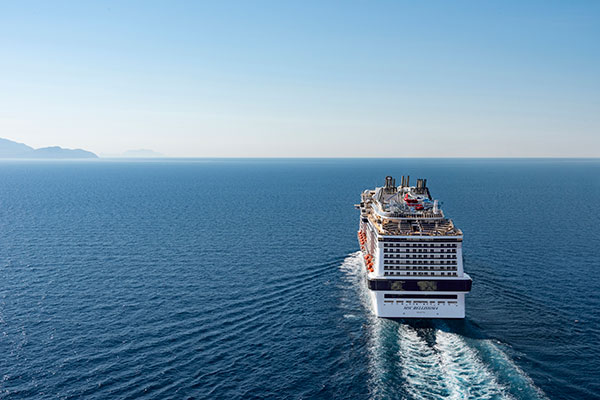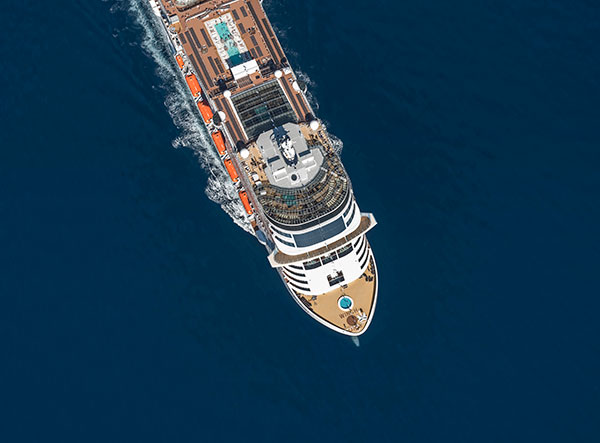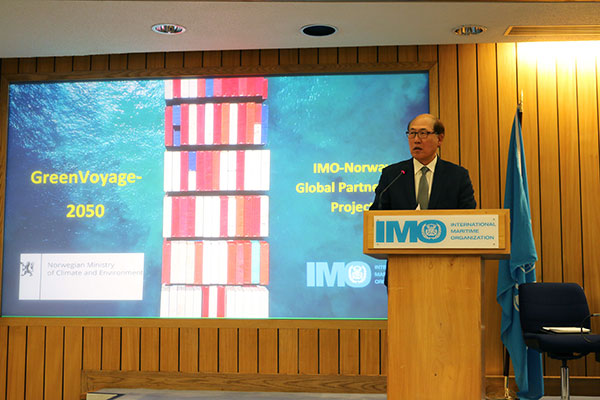Environment
Green Marine Sets Sail

photo: CRUISE LINES INTERNATIONAL ASSOCIATION
Marine sector stakeholders need to unite in tackling air pollution and greenhouse gas emissions from shipping – as well as finding new ways to power vessels more sustainably.
International Maritime Organization’s
(IMO) strategy is to reduce sector-wide
emissions by at least 50% by 2050. To
deliver this, significant numbers of zerocarbon
ships, or ships that can be easily
adapted to use low or zero carbon fuels
later in their life, will have to enter the fleet
as early as the 2030s.
Appearing at the World Economic
Forum in Davos in January 2020, IMO Secretary-
General Kitack Lim commented that
as some parts of the world are flooding
while others are burning, there can be little
doubt that addressing climate change
must be “humankind’s major priority”.
According to Lim, ambitious regulatory
targets will act as the catalyst for technology,
triggering research, development
and innovation.
“Now is the time to start developing
the vessels, the fuels, the delivery mechanisms
and all the other necessary infrastructure
to support zero-emission shipping”,
he stated.
Turning specifically to the need for a
collective approach throughout the entire
global supply chain, Lim added that collaboration
in this area is likely to include
developing and testing low or zero-carbon
fuels; better communication and planning
over berth availability to help with speedoptimization
and just-in-time arrival; and
supplying cleaner on-shore power for ships
in port.
Planning for a zero-carbon shipping
industry, however, cannot be done in isolation, he noted. “Infrastructure developments
and investment decisions also need
to be made collaboratively,” he said, calling
for cross-sectorial R&D initiatives as
well as new transferable and scalable technologies.
CRUISE LINES ANSWER THE CALL
While cruise ships comprise far less than
1 percent of the global maritime community,
cruise lines have been at the forefront
in developing responsible environmental
practices and innovative technologies. In
December 2018, the Cruise Lines International
Association (CLIA) announced a historic
global cruise industry commitment to
reduce the rate of carbon emissions across
the industry fleet by 40 percent by 2030.
Furthermore, CLIA very much aspires to
the IMO’s vision of a carbon-free shipping
industry by the end of the century.
The commitment to reduce the rate
of global fleet emissions by 40 percent
is the outcome of a collaborative process
designed to build consensus among
cruise line leadership. Progress toward the
40 percent target will be measured against
a 2008 fleet baseline, and emissions rates
will be calculated based on the industry
fleet’s total carbon emissions, total ship
berths and total distance traveled.
According to CLIA, the reduction will
be fueled by innovative technologies for
energy efficiency in ship design and propulsion.
The industry’s first liquified natural
gas (LNG)-powered ship was launched
in 2018, and some 25 such ships could
be operating by 2025. While LNG ships
principally address pollution, there is also
a corresponding benefit for carbon emissions
reduction.
BILLION DOLLAR QUESTION
At present, cruise lines work with scientists
and engineers to develop cutting edge,
sustainable environmental innovations and
practices, investing $1 billion in new technologies
and cleaner fuels. Among these
advancements, the industry has designed
and installed exhaust gas cleaning systems
(EGCS) on ships to reduce emissions by as
much as 98 %.
Cruise lines will also implement Ship
Energy Management Plans for route planning
and maintenance to reduce fuel consumption
and carbon emissions. According
to plan, energy efficient design standards
will reduce CO2 emissions by 30 percent
by 2025.
In addition, cruise lines prioritize
energy efficiency as part of their environmental
protection programs. Investments
include energy-efficient engines and hull
coatings that reduce friction and fuel consumption,
as well as energy-saving LED
lights and higher efficiency appliances.

photo: CRUISE LINES INTERNATIONAL ASSOCIATION
CHALLENGE ACCEPTED
Olli Kaljala, Marine Chief Executive for Finland
and Baltic States at Bureau Veritas,
points out that shipping plays an important
part of the global economy, transporting
more than 80 % of world trade by volume.
“What’s more, shipping manages to
do this while releasing the least amount
of greenhouse gasses per transported unit.
Still, approximately 3 % of global greenhouse
gas emissions are caused by shipping,”
Kaljala says.
According to Kaljala, the use of alternative
fuels is regarded today as “a key
area” of technological development for
sustainable transport.
“In shipping, there is today a consistent
focus given to the potential application of different cleaner fuel solutions,
with some of them posing substantial challenges
to ship design,” he assesses.

Green Voyage 2050 – agreement signing.
photo: INTERNATIONAL MARITIME ORGANIZATION
ALTERNATIVES EMERGING
Kaljala observes that today, ship owners
have a long list of alternative clean fuel
options to choose from on the road to a
carbon-free future, each with their own
advantages and challenges.
“From increasingly common LNG
solutions, via fuels that could play a role
in the future such as Liquefied Petroleum
Gas (LPG), electricity, methanol and biofuels,
to less developed options such as carbon
free hydrogen and ammonia,” Kaljala
lists, while advising not to forget about
wind power, either.
“Wind propulsion is a leading decarbonization
technology. However, it
receives limited consideration in sustainable
shipping discussions,” he says.
Classification societies such as
Bureau Veritas are playing a significant role
in supporting the development of IMO regulations,
as well as industry standards for
design, operation and bunkering.
“We are involved in various joint
industry projects to assess technical feasibility
and safety risks of alternative fuels
– considering both thermal engines and
fuel cells. We also support forerunners in
developing and completing projects,” says
Kaljala.
Text by Sami J. Anteroinen



